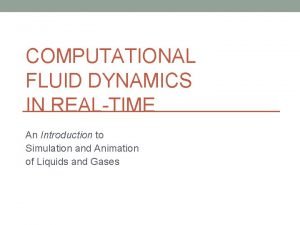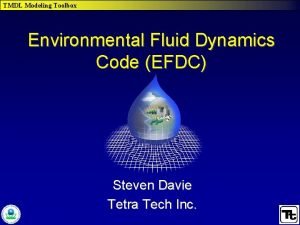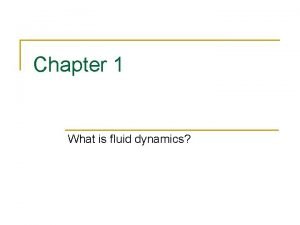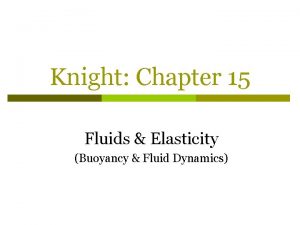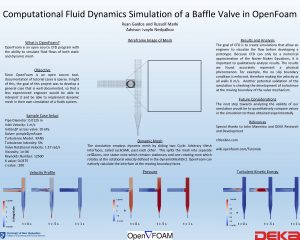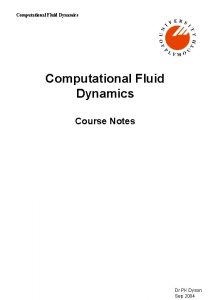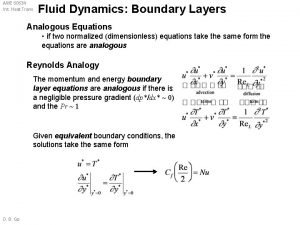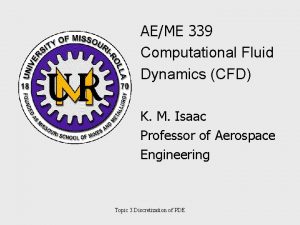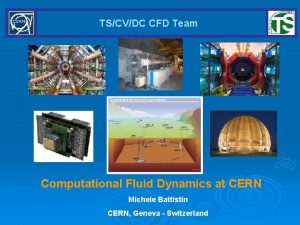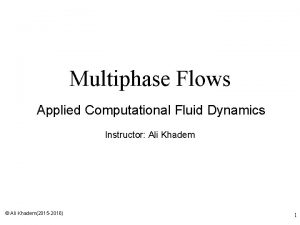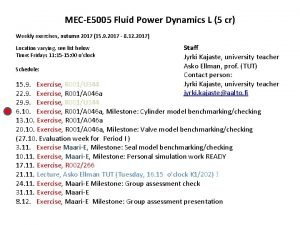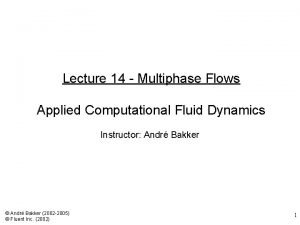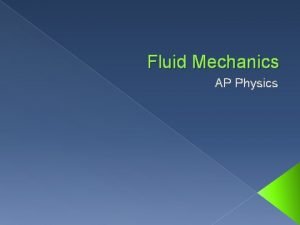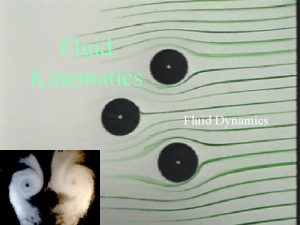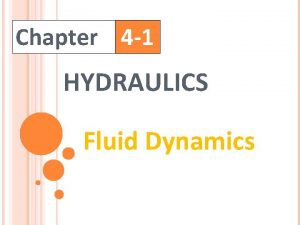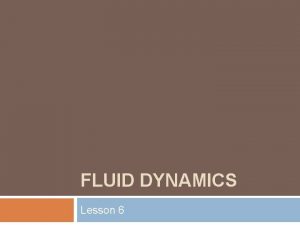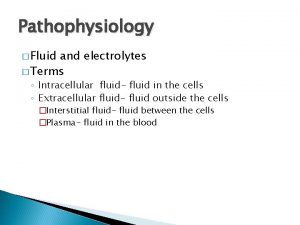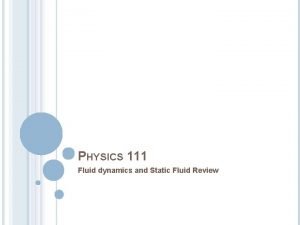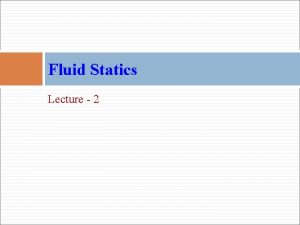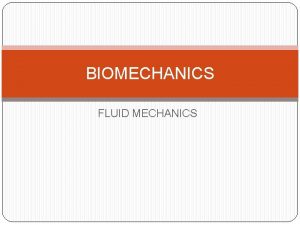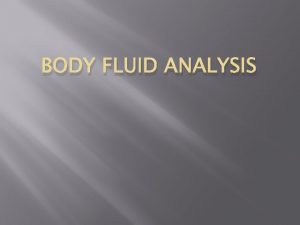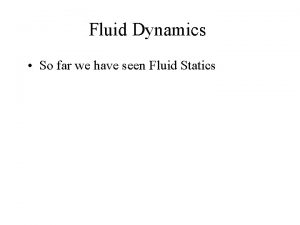Fluid Dynamics The study and analysis of fluid

















- Slides: 17

Fluid Dynamics • The study and analysis of fluid in motion • Motion of fluids can be predicted in the same way as the motion of solids using the fundamental laws of physics with the physical properties of the fluid.

Continuity and Conservation of Matter • Basic Terms Ø Mass flow rate Example: An empty tank weighs 7. 0 kg. After 6 minutes of collecting water the tank weighs 20. 0 kg. Determine the mass flow rate

• If mass flow rate of a fluid from a pipeline is 1. 7 kg/s, then time to fill a container with 8 kg of the fluid is

Ø Volume flow rate - Discharge is the volume of fluid flowing per unit time Note

If the density of a fluid is Then and

Ø Discharge and mean velocity x Let • Cross sectional area of a pipe at point X be A • Mean velocity at point X to be um • During a time t, a cylinder of fluid will pass point X with a volume Aumt.

The volume per unit time (discharge) If • Cross-sectional area, A, is 1. 2 x 10 -3 m 2 • Discharge, Q is 24 l/s, Then mean velocity, um, of fluid is

• The velocity in the pipe is not constant across the cross section. • The velocity is zero at the walls increasing to a maximum at the centre then decreasing symmetrically to the other wall. • The variation across the section is known as the velocity profile or distribution. • The idea, of mean velocity multiplied by the area gives the discharge, applies to all situations - not just pipe flow

Ø Continuity • Principle of conservation of mass : Matter cannot be created or destroyed - (it is simply changed into a different form of matter). Apply principle to fixed volumes (control volumes, surfaces, fixed region)

• For any control volume • For steady flow, no change in the mass in the control volume,

• Apply the principle of conservation of mass to analyse flowing fluids. • Take a streamtube. v. No fluid flows across the boundary made by the streamlines. vmass only enters and leaves through the two ends of this streamtube section.

So • For existence of steady flow n it u n i t Con o i t a u y eq

• For steady flow quantity of fluid past any point is constant Ø = 100 mm Ø = 50 mm 1 2 • No fluid added between points 1 & 2 Continuity equation for any fluid For incompressible fluid (density constant), Continuity for liquid

Example Soln. Using Continuity Equation Hence

Discharge Weight flow rate Mass flow rate

Some applications of the continuity equation v A pipe which expands or diverges v Determination of velocities in pipes coming from a junction.

Exercise • If pipe 1 diameter = 70 mm, mean velocity 4 m/s, pipe 2 diameter 40 mm takes 40% of total discharge and pipe 3 diameter 55 mm. What are the values of discharge and mean velocity in each pipe? • Q 1=0. 00385, U 1=4 • Q 2=0. 00154, U 2=1. 225 • Q 3=0. 00230, U 2=0. 968
 Fluid compartments in the body
Fluid compartments in the body Movement of body fluids
Movement of body fluids Fluid dynamics animation
Fluid dynamics animation Efdc
Efdc Fluid dynamics definition
Fluid dynamics definition Fluid dynamics
Fluid dynamics Euler equation
Euler equation Fluid dynamics
Fluid dynamics Fluid dynamics
Fluid dynamics Fluid dynamics
Fluid dynamics Computational fluid dynamics
Computational fluid dynamics Cern alice
Cern alice Computational fluid dynamics
Computational fluid dynamics Fluid power dynamics
Fluid power dynamics Computational fluid dynamics
Computational fluid dynamics Fluid dynamics
Fluid dynamics Sutherland's law
Sutherland's law Fluid dynamics
Fluid dynamics


